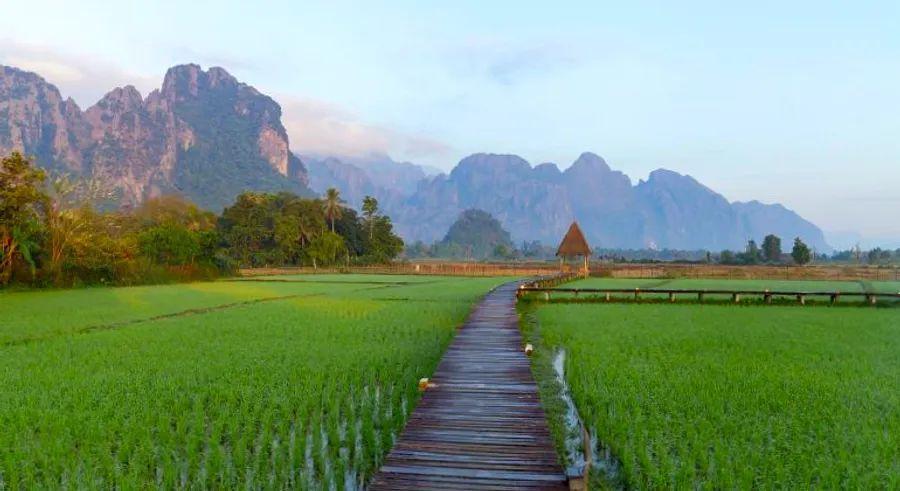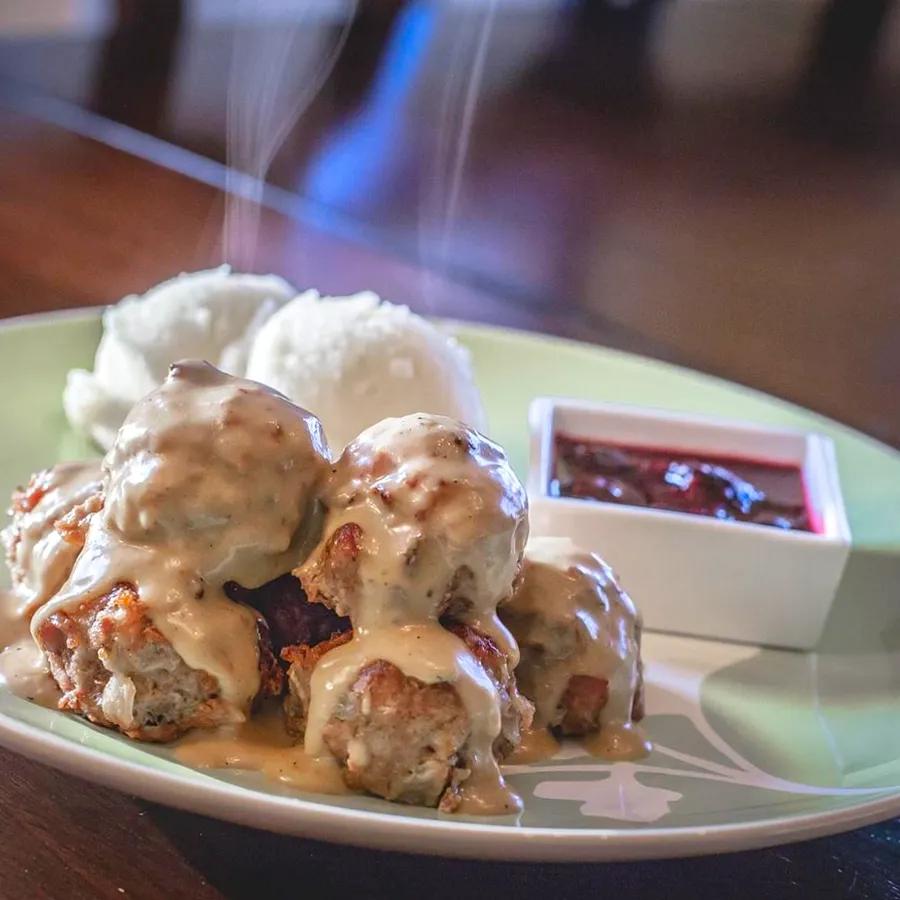Vang Vieng, Laos: From Party Hotspot to Eco-Adventure Haven

Majestic limestone peaks tower over the lush rice paddies of central Laos, resembling the spine of a slumbering dragon.
Nestled in the heart of this stunning landscape is Vang Vieng.
“Vang Vieng occupies an ideal spot, situated halfway between Vientiane and Luang Prabang,” says Inthy Deuansavan, president of the Vientiane-based travel agency Green Discovery, in an interview with Dinogo Travel.
“If the authorities manage the activities properly, preserve the river’s cleanliness, and control the noise, this destination has a promising future and could benefit from sustainable tourism for many years.”
The Reinvention of Vang Vieng
Nestled along the banks of the Song River, the quiet town may seem peaceful today. However, Vang Vieng has undergone a dramatic transformation over the past 15 years, shifting from a farming village to a notorious party hub after being ‘discovered’ by budget travelers in the late 1990s.
Rampant alcohol abuse, drugs, pollution, hasty construction, and tragic accidents all had a negative impact on the local community.
In 2012, the town's story took a drastic turn when the government closed down most of the troublesome bars and activities, rebranding Vang Vieng as a sustainable eco-destination.
Since that turning point, a revitalized Vang Vieng has emerged, rising from the remnants of its past excesses to embrace a more balanced future.
The town has transformed into the country’s adventure travel hub, offering a wide range of exhilarating activities for thrill-seekers.
Major Pan-Asian travel companies like Khiri Travel and Grasshopper Adventures have recognized Vang Vieng's potential, and their custom adventure and cycling tours often pass through this vibrant town.
Stefan Scheerer, General Manager of Khiri Travel for Laos, believes the surrounding region holds immense untapped potential.
“The landscape is breathtaking, with hundreds of caves, quaint villages, and crystal-clear blue lagoons, many of which are still waiting to be explored,” he notes.
Drifting along the river

Although Vang Vieng has shut down its perilous water slides along the riverbanks, one classic experience remains unchanged: the leisurely river tubing ride is still the top outdoor activity.
Sitting back in a vintage inner tube and drifting down the Song River toward town, beer in hand, is a must-do outdoor adventure for any Vang Vieng visit.
For travelers looking to experience the river more actively, kayaks and rafts are available for rent in the afternoons, offering the chance to paddle through stunning sunsets surrounded by misty hills.
Hit the Road
On the western side of the Song River, a 15-mile (25-kilometer) loop of rugged roads takes travelers through ethnic minority villages, lush fields filled with water buffalo, hidden caves, scenic viewpoints, and a series of Blue Lagoons—stunning turquoise waterholes.
The Blue Lagoons are numbered from one to five, with each successive lagoon offering more tranquility and seclusion.
Travelers can easily hire a tuk-tuk for the short, 7-kilometer ride to reach the lagoons.
Rewarding Climbs

For those seeking an adrenaline rush from above, zip-lining is a thrilling option. Several local tour companies in Vang Vieng offer this exciting experience.
During the dry season, from November to March/April, Vang Vieng boasts some of the most exhilarating rock-climbing and hiking adventures in Southeast Asia.
The short but challenging hike up Pha Hon Kham, one of the region’s tallest peaks, rewards climbers with stunning views at both sunrise and sunset.
Perched atop the rickety 360-degree viewing platform, floating high above the valleys and rock formations, is a dizzying experience—one that matches the challenging climb through thick forest, across unstable wooden steps, and over massive boulders.
For those craving even more breathtaking views of the stunning landscape, a hot air balloon ride offers an unforgettable journey over the scenic countryside.
Mysterious Caves

Caving is another favorite outdoor activity.
The impressive rock formations and numerous caves on the west side of the river are best accessed by mountain bike, although many visitors now prefer ATV rides or motorcycles for a quicker journey.
Some caves house Buddhist artifacts, while others served as hiding places for locals fleeing marauding invaders in the past.
Tham Pha Daeng even features a serene lagoon, offering a chance to take a refreshing swim.
At sunset, hundreds of bats emerge from this cave and others, filling the sky as they head into the night.
There are plenty of eerie tales about travelers losing their way in the pitch-black caves, so it's crucial to bring a guide, sufficient water, and a reliable flashlight.
Where to Stay

In addition to traditional guesthouses, agrotourism lodgings have started to gain popularity, offering a unique stay amidst the region's breathtaking landscapes.
A pioneer in agrotourism, Lao Farm offers overnight stays for those seeking health-conscious and organic food experiences.
Thanongsi Sorangkoun, also known as Mr. Tee, once worked for the forestry department in Vientiane before returning to his hometown of Vang Vieng in 1996.
“In the late ’90s, travelers came looking for MSG-free, organic food, which inspired me to start the farm,” says Thanongsi in an interview with Dinogo Travel.
“Soon, I started hosting foreign volunteers who stayed for free in exchange for helping out. I wanted to show locals that it’s possible to make a living without harming the environment by using sustainable farming practices. Today, we produce excellent goat cheese and grow plenty of mulberry trees.”
For those not yet ready to embrace the farming lifestyle, the Riverside Boutique hotel offers another high-end alternative.
Nestled along the banks of the Song River, this refined French-owned resort incorporates local design elements inspired by Laos' diverse ethnic cultures.
The resort boasts a beautiful pool, a delightful spa, breathtaking views of the surrounding mountain peaks, and a selection of top-notch local tours in collaboration with Green Discovery.
In addition, the upscale Thai hotel chain Amari has recently launched Amari Vang Vieng, a property with over 150 rooms—many of which offer scenic river views.
How to Get There
Vang Vieng is conveniently situated between Laos’ capital, Vientiane, and the historic city of Luang Prabang, both of which have international airports offering direct flights from regional destinations.
Taxis, vans, and buses are available for booking to travel to Vang Vieng from either city, with travel times ranging between to 5 hours.

1

2

3

4

5
Evaluation :
5/5